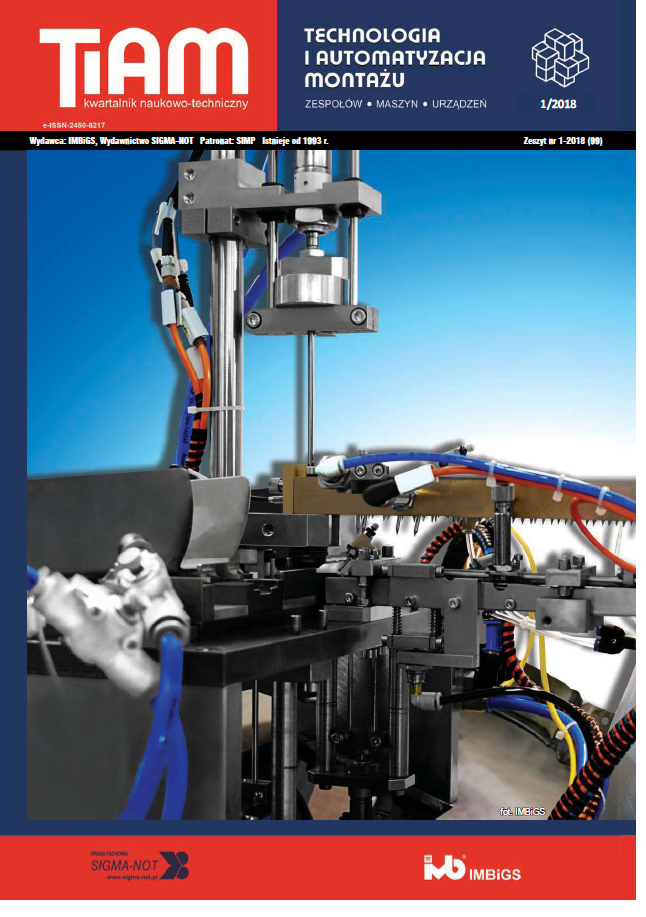Abstract
The aim of this experimental research was to determine the strength of butt bonded joints depending on the bevel angle of the samples. Samples of the aluminum alloy EN AW – 5754 are chamfered by mechanical treatment, using 5 variants bevel angles. The reference samples were also made, which have the 90° angle. The mashing process using P220 abrasive tool and degreasing was used as surface treatment for bonding. Epidian 57/PAC/1:1 two-component epoxy adhesive was applied to prepare the bonded joints. The hardest part of the bonding technology was joining the samples with a bevel angle equal to 15°, this was related to the largest surface bonding. After curing process the bonded joints were destructive tested. Zwick/Roell 150 testing machine was used to strength test and the test was carried out according to ISO 4587 standard. Based on the comparison test results of the butt bonded joints strength of beveled elements it can be notice that the chamfering of samples allow to obtain the similar strength as conventional adhesive bonds butt. The highest bonded joints strength was obtained for bonded joints of 70° (and also 30°) bevel angel of samples, but it is the smallest for the case of 15° bevel angle of samples.
This is an Open Access article distributed under the terms of the Creative Commons Attribution License CC BY 4.0 (https://creativecommons.org/licenses/by/4.0/)
References
Adams R.D., J.A. Harris. 1987. “The influence of local geometry on the strength of adhesive joints”. International Journal of Adhesion and Adhesives (7): 69–80.
Adams R.D., J. Comyn, W.C. Wake. 1997. “Structural Adhesive Joints in Engineering Book” 2nd edition, United Kingdom, Springer.
Da Silva L.F.M. et. al. 2009. “Effect of material, geometry, surface treatment and environment on the shear strength of single lap joints”. International Journal of Adhesion and Adhesives (29): 621–632.
Godzimirski J. i in. 1997. „Konstrukcyjne połączenia klejowe elementów metalowych w budowie maszyn”. Oficyna Wydawnicza Politechniki Rzeszowskiej.
Godzimirski J. 2002. „Wytrzymałość doraźna konstrukcyjnych połączeń klejowych”. Warszawa: Wydawnictwo Naukowo-Techniczne.
Kuczmaszewski J. 1995. „Podstawy konstrukcyjne i technologiczne oceny wytrzymałości adhezyjnych połączeń metali”. Wydawnictwa Uczelniane Politechniki Lubelskiej.
Rudawska A., J. Kuczmaszewski. 2012. „Badania porównawcze efektów modyfikacji żywic epoksydowych napełniaczami o dużym stopniu rozdrobnienia dla wybranych utwardzaczy”. Przetwórstwo Tworzyw (5): 500–504.
Rudawska A. 2015. “Pressure during curing and the strength of 2024, 2017A and 1050 aluminium alloy sheet adhesive joints”. Advances in Science and Technology Research Journal (9): 96–103.
Szabelski J. 2014. „Badania wpływu obróbki cieplnej doczołowych połączeń klejowych na ich wytrzymałość statyczna”. Wydawnictwa Uczelniane Politechniki Lubelskiej.
http://www.sebros.eu/aluminium/aluminium-EN- -AW-5754, dostęp 01.2017.

